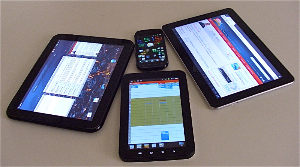The hidden danger to companies with BYOD


The BYOD movement is growing at a fast pace as workers embrace bringing their own devices to the office. IT departments are scrambling to handle this influx of various mobile devices coming to work. Keeping the corporate environment secure is foremost on everyone's mind but there's another danger lurking in BYOD that few are considering.
There are plenty of reasons both pro and con for BYOD, where employees bring their own smartphones, tablets, and laptops to work. BYOD is not for every employee nor a good fit for every company but for others it's viewed as a good way to boost productivity.
Related:
- BYOD: IT’s brave new world (video)
- The ABCs of BYOD for the SMB
- iPad 2 as a serious writing machine (how-to)
- Typical day in the life of the iPad 2
- ThinkPad Tablet vs. Samsung Galaxy Tab 10.1 as laptop replacement
- Post-PC era or not, we are firmly in the mobile era
While corporate IT departments struggle with the proper way to handle the influx of various different devices/platforms to keep corporate networks/information secure, workers involved are busy doing their jobs, often more productively than ever.
Companies with BYOD programs should regularly sit down with workers using their own gear and discuss what they are using and how they are using it.
Supporters of BYOD cite that increased productivity is a big plus for allowing employees to use their own equipment for work. Employees are familiar with their own device(s) and without any training can use them to maximum effect. That's a big potential win for both employers and workers. It's also a hidden danger for corporations.
Determining the best tools and practices for workers is a key endeavor for all businesses. This is vital to have work processes improve over the long term to keep productivity at top levels across all departments. This is normally accomplished by keeping an eye on how workers most effectively use the limited tools assigned to them, both hardware and software.
In the BYOD setting this fine-tuning of best practice is not straightforward and may be overlooked by most businesses. After all, workers may be using a wide assortment of devices and while employees are familiar with their own gear the companies probably aren't.
Even if businesses get their head around what devices are being used, they likely don't have any idea what software (apps) workers are using to get work done. While this doesn't matter in the short term, it's helping employees be more productive after all, it stymies the sharing of what works best for improvement company-wide.
Companies with BYOD programs should regularly sit down with workers using their own gear and discuss what they are using and why. Find out what apps are being used on each platform and how they are being leveraged to best get the work done. This should be done on a public basis so the information is shared with the workforce as well as with the IT folk keeping track of it all.
Workers know their gear better than anyone, and they will undoubtedly use whatever app works best for them. There may be approved official apps pushed by the company but if there's a better way to do things that's what employees will use on their own devices. Finding out what those apps are and how they are better is in the company's best interest to make everyone more productive.
It's important that this discussion not be held for the purpose of restricting what apps/devices good workers are using. The purpose is open sharing of best practices, not restricting how workers use their own gear. If companies begin rejecting what productive employees use and how, the workers will simply stop sharing the information. This guarantees that best practices will not be improved company-wide over time, and that's the danger inherent in BYOD.